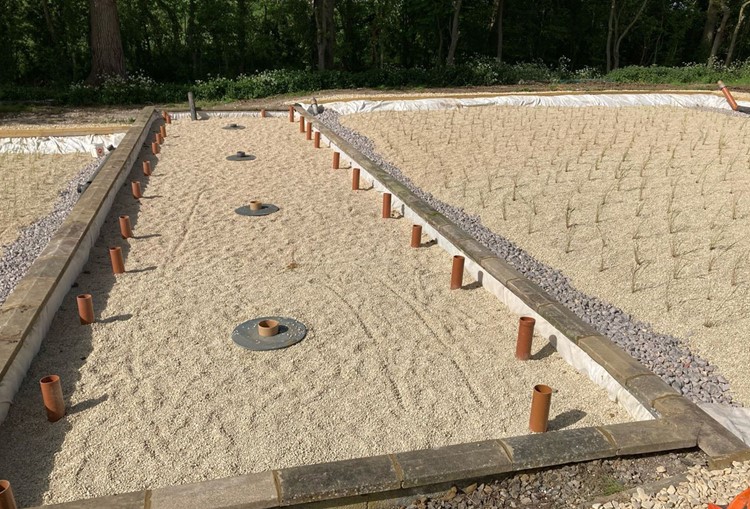Constructed Wetland Refurbishment
Stonbury carried out refurbishments to several constructed wetlands on a Water Recycling Centre (WRC) in the west of England.
The site consisted of three beds which treat effluent from adjacent properties prior to discharge into the watercourse. The existing 600 metre-squared system was overgrown and partially blinded with sediment which was preventing effluent from effectively filtering through the system. This became apparent via sub-optimal sampling data.
Before commencing work, Stonbury conducted trial digs to assess the condition of the liner. Several damaged areas were identified; these were caused by self-sown trees and tears from fallen coping stones. Due to its age and degree of damage it was not practical to repair it so the client agreed to replace the liner.
After ecological consents and other documentation was approved, the client installed a temporary treatment facility to bypass the reedbeds during the works, which allowed the beds to be drained. The adjacent watercourse within the site was cordoned to minimise environmental impact and bog mats were used to protect the area around the reed beds. The site was checked using a CAT scanner before excavations took place.
The team used an excavator to carefully remove the reeds and rootstock from the beds and stockpiled plant material for green waste disposal. Supply and transition pipework between the beds was removed as it was uncovered and any that was in suitable condition was retained for re-use. The stone media was then excavated and disposed of using a licenced waste carrier. When possible, Stonbury endeavour to re-use materials.
The existing liner and geotextile were then removed and the clay base was re-compacted to receive the new linings. A new base geotextile layer was rolled out, ensuring suitable overlap between adjacent strips. The EPDM liner was then laid using the excavator equipped with a spreader bar. The liner was manipulated to ensure that it was flat and provided sufficient material to terminate against the concrete structures and into the anchor trench. Inlet and outlet pipe penetrations were welded and sealed.
The lagoon was water tested for an agreed period of five days. Following a successful test, the water was removed from the lagoon and an additional protective layer of geotextile was placed on the liner prior to reinstalling the filter media. Replacement stone media of graduated sizes was laid in appropriate layers and levelled. Aeration pipes and inlet/outlet pipework was installed at this point.
Finally, approximately three and half thousand Phragmites australis reeds were planted by hand at a rate of six to eight per metre squared, successfully returning the beds to design condition.


